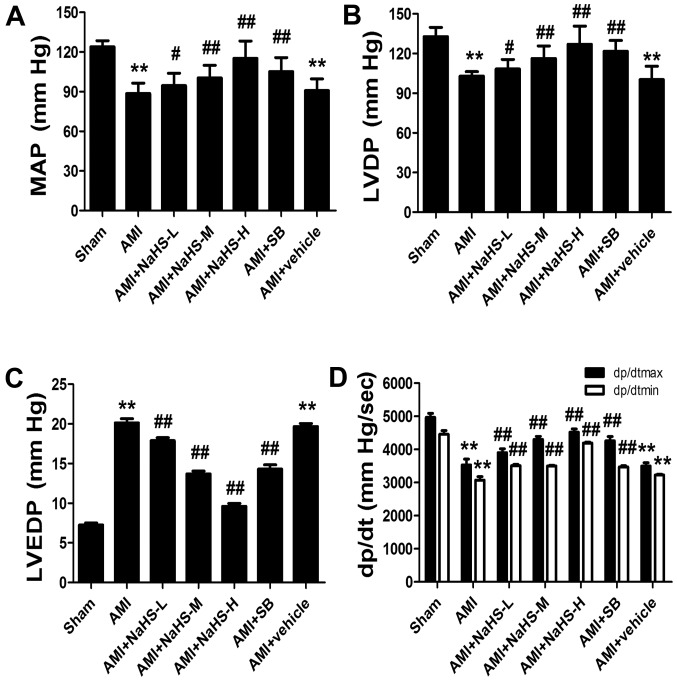Figure 2.
Effect of sodium hydrosulfide on cardiac function in rats with acute myocardial infarction (AMI). (A) Mean arterial pressure (MAP), (B) left ventricular developed pressure (LVDP), (C) left ventricular end diastolic pressure (LVEDP), and (D) maximal positive and negative rate of left ventricular pressure (dp/dtmax, dp/dtmin). Data are expressed as the means ± SEM. (n=8 rats/group). **p<0.01 vs. sham-operated group; #p<0.05 and ##p<0.01 vs. AMI group. Sham, sham-operated group; AMI, rats subjected to AMI (ischemia) and not treated with any agents; AMI + NaHS-L, rats subjected to AMI and treated with low-dose (0.78 mg/kg) NaHS; AMI + NaHS-M, rats subjected to AMI and treated with medium-dose (1.56 mg/kg) NaHS; AMI + NaHS-H, rats subjected to AMI and treated with high-dose (03.12 mg/kg) NaHS; AMI + SB, rats subjected to AMI and treated with the glycogen synthase kinase-3β (GSK-3β) inhibitor, SB216763 (0.6 mg/kg); AMI + vehicle, rats subjected to AMI and treated with the vehicle (DMSO, 2 ml/kg).

